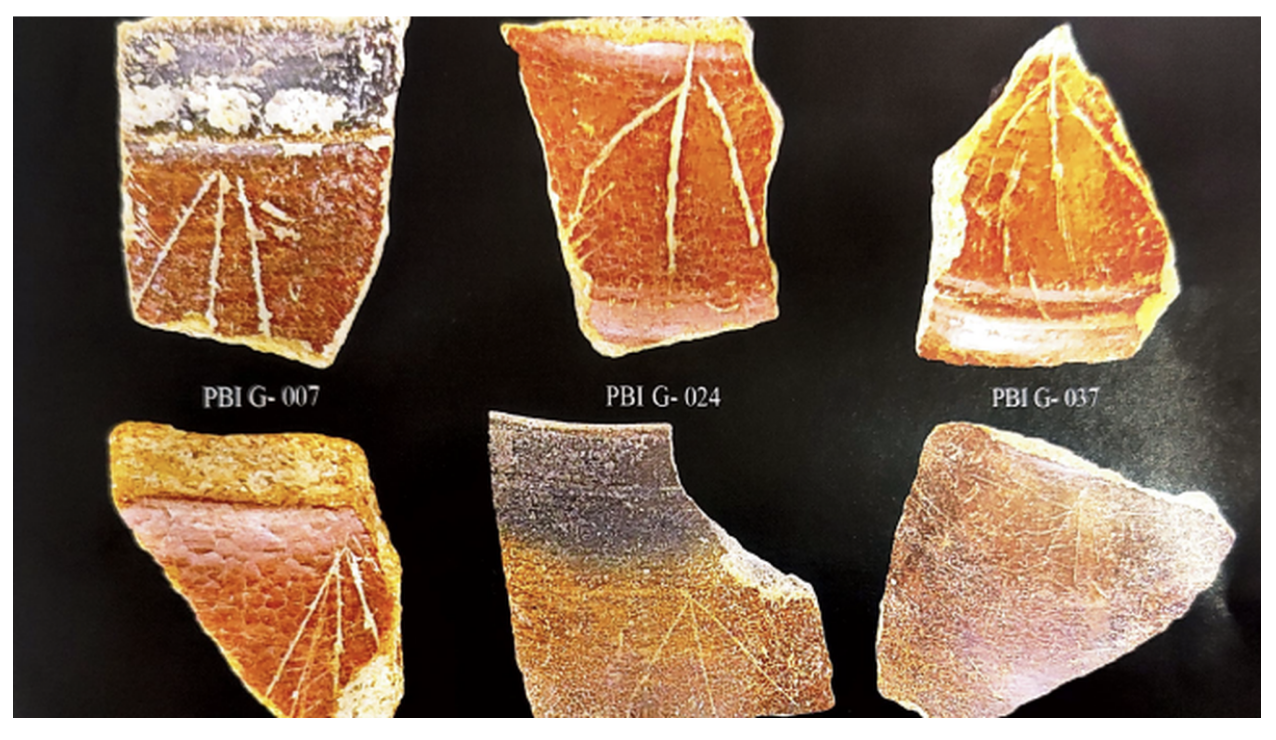News Excerpt:
Recently, Several artifacts were unearthed during the recent archaeological excavations at Perumbalai, conducted by the Tamil Nadu government’s Department of Archaeology.

About Report
- These findings were documented in the report "Excavations at Perumbalai 2022" released by Tamil Nadu Chief Minister.
- The report indicates that, based on AMS dating, the lowest excavation level dates back to the 6th Century BCE.
- Similar to other early historic sites like Vallam, Kodumanal, Keeladi, Uraiyur, and Karur, Perumbalai yielded potsherds inscribed with Tamil-Brahmi and graffiti marks.
Discovered Artifacts
- The pottery found at various strata demonstrates a clear chronological sequence. The earliest levels contained very thin pottery, with fine Black and Red Ware (BRW) and black ware being the predominant types.
- Among the discoveries were potsherds marked with graffiti resembling geometric symbols.
- The clay used for these pottery was fine and well-levigated, and the shapes and sizes of the pottery suggest an Iron Age origin. Graffiti marks were abundant in these layers.
- A total of 1,028 inscribed potsherds were recovered. Common graffiti marks included geometric signs, such as two oblique lines meeting a central vertical line at the top.
- Other significant marks included stars, U-shaped and T-shaped signs with small vertical strokes, bows and arrows, and ladders.
- Swastika-like symbols were also found, including on a fully intact black-and-red ware bowl.
- These graffiti marks are characteristic of the Iron Age and early historic period, although only 297 of the inscribed potsherds had recognizable signs.
- Perumbalai yielded various types of ware, including burnished ware, black and red ware, russet-coated black and red ware, russet-coated red ware, red ware, and black ware.
- Russet-coated ware, used as tableware, is considered the elite ware of the site.
- The excavation also uncovered 351 antiquities from different levels, including over 200 terracotta objects depicting human and bird figurines, beads, wheels, sling balls, spindle whorls, lamps, and hopscotches.
- Notably, an unidentified copper coin and a copper bell with an upper projection were also found.
About Perumbalai
- Perumbalai is situated on the bank of the Nagavathi (ancient Palar), a tributary of the Cauvery River.
- The 13th-century literary work "Kongumandala Satakam" by Karmegakavirayar of Vijayamangalam refers to Perumbalai as the northern boundary of the Kongu region, which includes present-day Coimbatore, Erode, Tiruppur, and parts of Dharmapuri and Salem districts.


